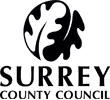1. Process
This section sets out the design and consultation process and how local residents can be involved in this. It also outlines what a design code is and how it fits into Surrey’s planning process.
2. Streets for Surrey core principles
What are Surrey’s core design principles and why are they important? This section outlines the broad objectives of Surrey’s new design code and the benefits in taking a pedestrian first approach to street design.
3. Governance
This section briefly summarises funding agreements that arise from development and the importance of working closely with developers and communities throughout the design process to develop a coherent network of infrastructure across Surrey.
4. General layout principles
This section provides detailed information on Surrey’s street vision, including 20-minute neighbourhoods, street typologies and designing a permeable and walkable street network. It also looks at utilities and servicing, emergency vehicle access and refuse collection.
5. Carriageway and junction design
Streets must be designed to move people safely, happily, and healthily. Good carriageway design also creates beautiful, sustainable streetscapes. This section covers best practice design principles including junction geometry, materials, and traffic calming.
6. Pedestrian and pavement design
The design of pavements, pedestrian paths and spaces for people take precedence over other street design elements. Developments must be well connected to homes, local services and other uses. This section provides information on how all development can achieve this.
7. Street Trees
Street trees make for healthier, happier and safer neighbourhoods. This section covers planting principles for street trees and greenery for new developments and refrofit schemes. Providing an excellent opportunity for creating tree-lined routes and achieving ecological goals, allowing us to regreen existing urban streets.
8. Sustainable drainage systems (SuDS)
Surrey is at increasing risk of water stress, rising temperatures and flooding. Sustainable water management plays an essential role in mitigating these risks as well as helping meet wider climate resilience aims. Find out more about sustainable water management here.
9. Street furniture, lighting and signage
Good quality street furniture can greatly enhance a place. This section covers appropriate use of street lights, Electric Vehicle charging, street furniture and wayfinding.
10. Vehicle parking
New developments should be designed around people not the car. This section looks at the principals for appropriately accommodating parking while ensuring streets are not dominated by cars. It looks at the design of on and off-street parking, school parking and parking management.
11. Cycling
All new streets and developments must prioritise active travel to create safe, direct and attractive cycle networks that are well connected to the local area. This section sets out the high-level principles, and detailed design requirements, that will allow developments to achieve this.
12. Integrating public transport
Public transport is essential at all scales of developments. The principles in this chapter provide guidance on how to design streets successfully to accommodate public transport.

